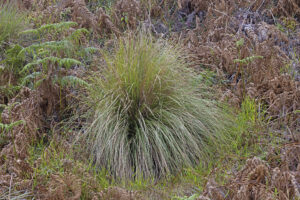I am touching the heavens!! We are somewhere in Munnar , at a very high altitude, almost as the level of Anaimudi, the highest peak in the verdant Western ghats. After an arduous off-road driving and a treacherous trek, we have reached our targeted location and feel we are very close to our goal.

Our highly ambitious quest is for one of the most elusive amphibians in the Western Ghats, the critically endangered “Resplendent bush frog”. Eravikulam National Park is listed as the only site to have this beauty. I am very hopeful that the frog may smile upon us in this habitat which is strikingly similar to the one found in the park.
As I let my eyes roam around trying to capture nature’s beauty through my eyes, I see a pristine pond and the small clumps of grass all around. I am expertly guided on this exhilarating trip by gifted naturalists from Munnar, Hadlee Renjith and his better half Seegirl Renjith. In fact, Hadlee is an ardent fan of RBF and has indeed named his company “Resplendent Experiences”. The frog we are looking for is a small creature a little longer than my thumb. I am not unduly worried as I am immensely confident that Hadlee and Seegirl will not fail me.

As we fan out and start looking, gently parting the bamboo shrubs, the enormity of the task in front of us hits me very hard. It is a proverbial “finding a needle in a haystack “ situation. To locate a tiny frog amidst this vast landscape is a herculean task indeed. It is nocturnal and tends to hide from artificial light sources. Secondly, as it is a ground-dwelling species it may retreat into the vegetation to avoid detection. Lastly, it is a very rare frog with an estimated population of around 300 in the wild. We are undeterred and keep searching. After a truly laborious forage Seegirl spots a healthy adult. Needless to say, I am overjoyed and let out a scream of triumph.

The first sight of the truly marvellous creature takes my breath away!! The orange bundle of energy moving on the greener blades of grass makes a stunning spectacle.
The term resplendens is derived from a Latin word meaning bright coloured and glittering. The frog is strikingly and iridescently colourful with bright orange and deep yellow, ornately dotted with purplish black spots. It is short-limbed compared to its other cousins and is a terrestrial species.
As I come out of my reverie, I gather my gear and start clicking away. The tiny one walks up and down the grass and poses for me. The habitat is tough for shooting and it is incredibly difficult to get a smooth background and a shot without distractions. After toiling for some time, I manage to get some decent images. As it is true with any wildlife photographer, no amount of images satisfies my appetite. However keeping the disturbance I might be causing to the habitat to a minimum, I bid adieu to the star albeit reluctantly.
Some Images







During the shoot. habitat shot of a wildlife photographer

A typical Shola forest
Raorchestes resplendens is endemic to the Munnar-Valparai area of the Anaimudi massif of southern Western Ghats, India. This is a mountainous region and a very rich biodiversity hotspot on the southwestern coast of India. More specifically, the frog is restricted to the montane grasslands – consisting of grasslands intermingled with tropical montane forest – also known as shola. The estimated extent of occupancy for R. resplendens is mostly within the Eravikulam National Park at 1,896 – 2,695 m elevation. The upper limit, 2,695 m, also represents the Anamudi peak where the species was initially found. Multiple other areas outside the park at a similar elevation are also being discovered.
Resplendent bush frog is a creature one must see in their lifetime. A massive amount of effort is required to see it but it is entirely worth it, without an iota of doubt. No herping trip to Munnar is complete without this spectacular frog in your kitty. Habitat loss is terribly affecting all these extraordinary creations of nature. Serious, well-directed and executed conservation plans are urgently necessary to preserve these beauties.
